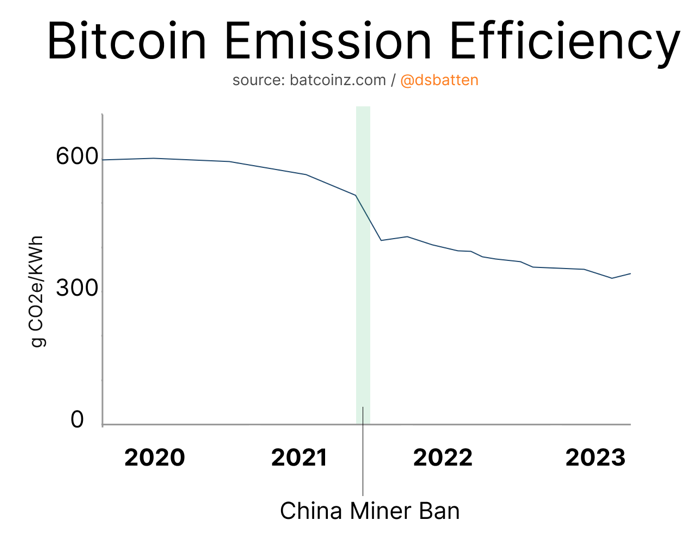Bitcoin mining using sustainable energy has been on a steady rise since 2021. The amount of Bitcoin mined through clean sources climbed over 50% a few months ago and offers optimism.
As governments across the world debate the energy consumption of Bitcoin, mining on the network is increasingly coming from sustainable energy sources. The amount of sustainable energy powering mining climbed over 50% a few months ago and continues to show signs of becoming a main source.
Entrepreneur and crypto supporter Daniel Batten offered information on energy consumption trends concerning crypto mining. One of the highlights is that Bitcoin has grown its sustainable energy mix to 6.2% per annum from January 2020. He notes that the growth rate is faster than any major industry, while the 52.6% sustainable mix also outcompetes other industries.

The amount of sustainable mining powering Bitcoin mining has steadily increased since 2021. At the time, it amounted to about 35%. It was also around that time the discussions related to Bitcoin’s energy consumption began taking center stage.
Norway is a standout performer in this regard, having the cleanest energy powering Bitcoin mining. The country produces about 1% of the total Bitcoin hash rate.
Those talks about Bitcoin’s energy have played a role in regulations, with the European Union (EU) being particularly mindful of it. It even suggested that it may shut down Bitcoin mining in order to provide more energy elsewhere as a result of the stress from the Russian invasion of Ukraine.
China Bitcoin Mining Ban Led to Massive Drop in Emissions
The emissions from Bitcoin mining have dropped considerably since China banned mining. It dropped by about half of its value after the ban.

However, there is also a massive underground mining operation in China, according to Cambridge data. About 20% of bitcoin’s total hash rate came from China between September 2021 and January 2022. To combat this, China began offering cash prizes to incentivize individuals to tip them off on mining operations.
Expert Challenges Cambridge Data on Bitcoin Emissions Trend
Cambridge Data has also stated that the emissions intensity is on a possible upwards trend, but Batten refuted this. He said that, for the past three and half years, emissions have consistently dropped. The Cambridge Bitcoin Electricity Consumption Index (CBECI) fossil fuels accounted for about 62% of Bitcoin’s energy mix in January 2022.
Batten has made it clear that Bitcoin differs from other markets by reducing emissions as its market cap grows, comparing the market cap to GDP. As more companies implement clean solutions, like a Texas Bitcoin mining company that is using a wind farm for the purpose, this trend is likely to become prominent.
Disclaimer
In adherence to the Trust Project guidelines, BeInCrypto is committed to unbiased, transparent reporting. This news article aims to provide accurate, timely information. However, readers are advised to verify facts independently and consult with a professional before making any decisions based on this content. Please note that our Terms and Conditions, Privacy Policy, and Disclaimers have been updated.


